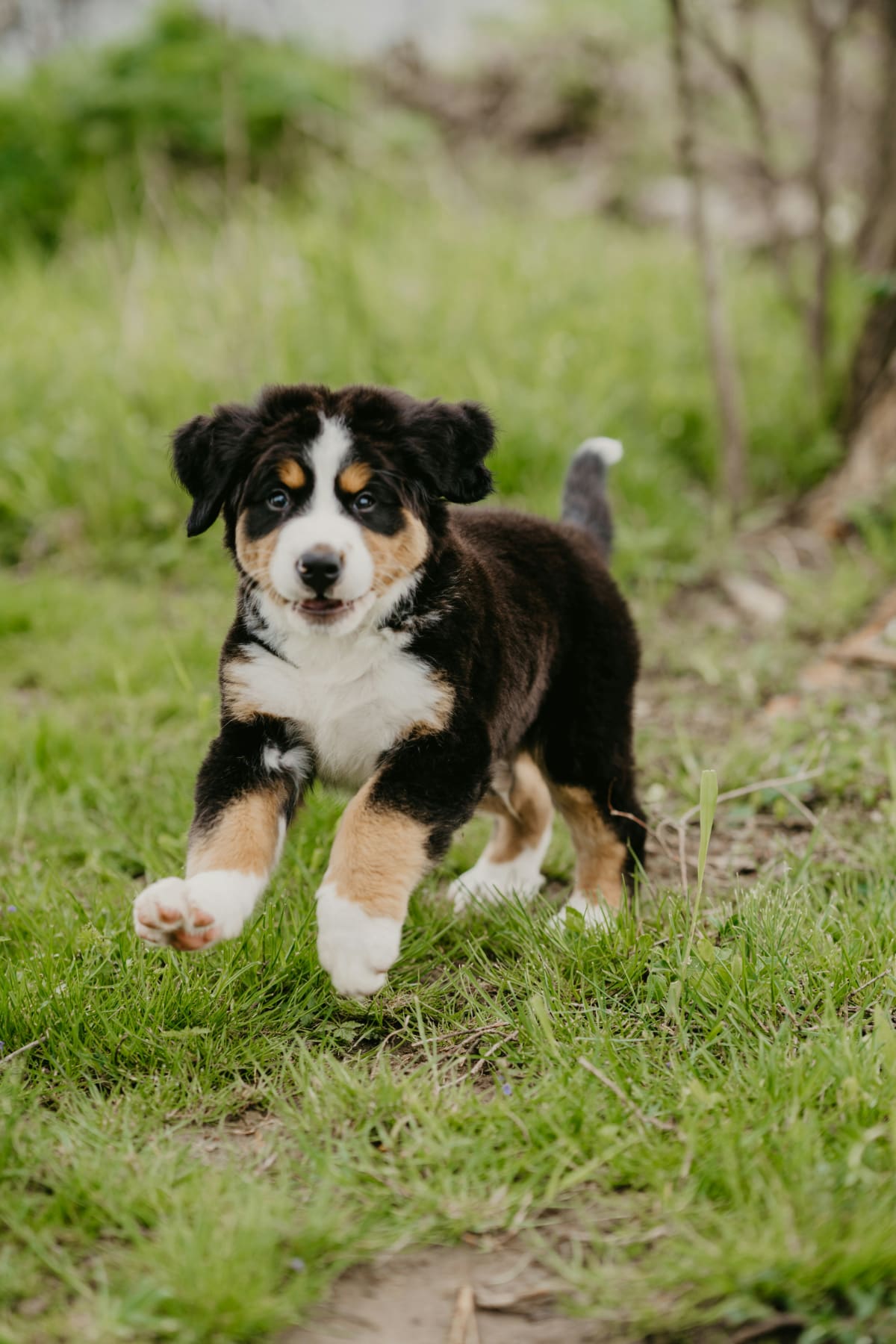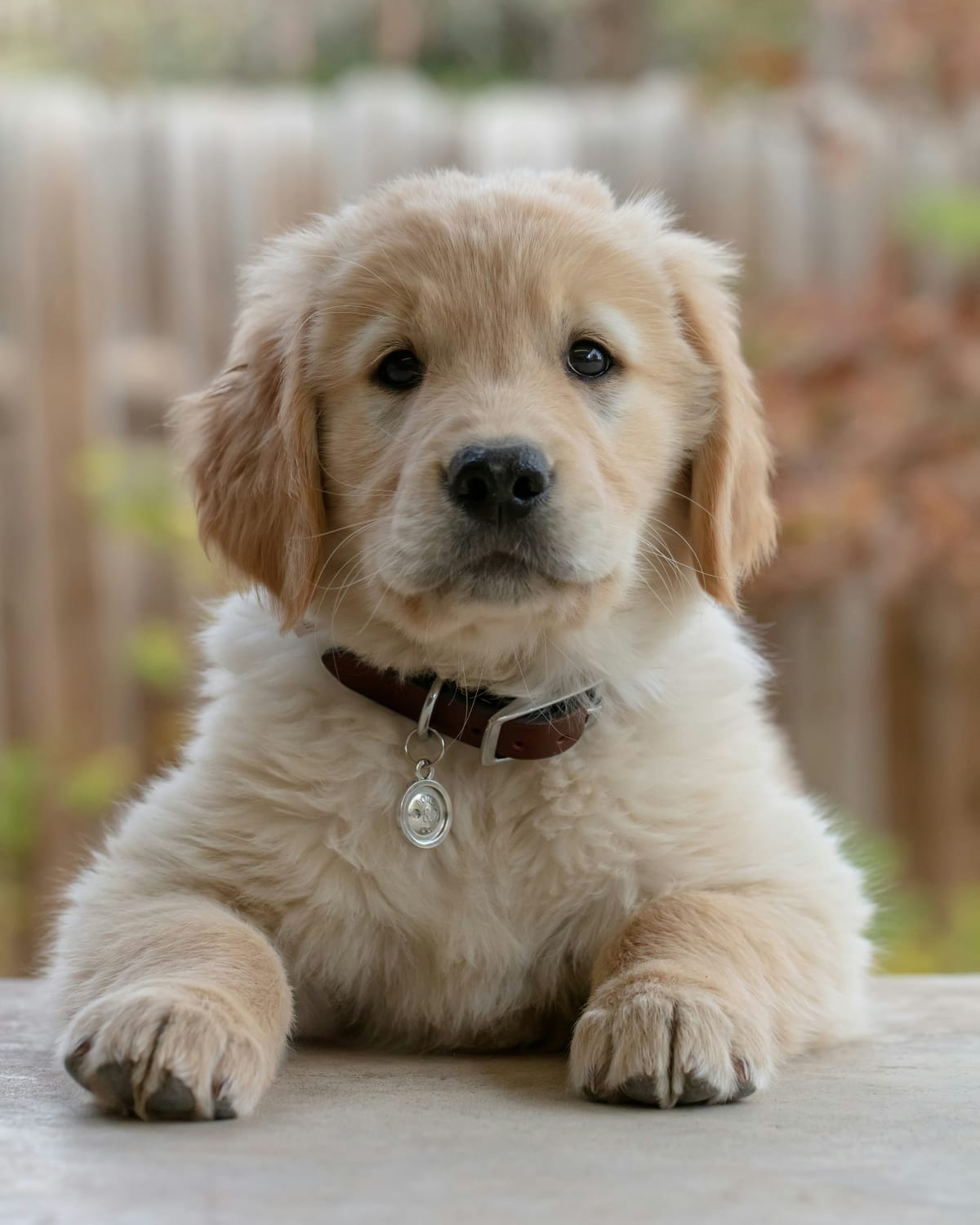House training a puppy takes positive reinforcement, time, and patience, but this is complicated when you have a full time job. Many working adults are in the office at least 35 hours a week, but an 8-week old puppy should be taken outside every hour. What’s a pet parent to do?
First, know you’re in good company. Over half of all U.S. households own a pet.
Second, know it will take several months to house train your puppy. Be patient, and start training as soon as you bring your puppy home. Some puppies pick it up as early as four months, whereas others might take a year. Many puppies are trained by the five or six-month mark. Remember, dogs aren’t born knowing where they can go, and some dogs are easier to housebreak than others.
Third, puppies have tiny bladders, and their potty habits can be idiosyncratic. It’s important to keep your eye on your puppy and not let it run around the house without watching it.
Confinement Helps House Training

To make housebreaking easier, start crate training as soon as you get your puppy. Put your dog in a safe, enclosed space that is big enough for the pup to turn around and stand up. Remember, a crate isn’t a dog sitter and it’s not for punishment. It’s the puppy's den.
Crate training a puppy is great for families who work. Dogs have a denning instinct to keep their sleeping space clean. Plus, crates help your pup learn to hold bowel and bladder muscles.
To introduce a puppy to the crate, open it when the dog is in the room. Let him smell it and explore. Don’t force the dog inside. Instead, when he wanders inside, reward him.
Encourage your dog to make himself at home in his den by leaving a trail of treats into the kennel. Once comfortable inside, leave the puppy inside for a little bit of time. Hang out with him and give him treats so he makes a positive association between the kennel and the reward. Consider putting the crate next to your bed at night to lower the dog’s nervousness. Later, you can move your dog’s crate to another room.
Increase how long the puppy stays inside bit by bit. As a general rule of thumb, our dog can spend one hour in the crate per month of age, but it’s best to avoid having your dog stay confined for more than four or five hours at a time.
Leave toys inside the crate so your puppy isn’t bored. Consider hard, rubber toys that allow you to put treats inside like peanut butter or stuffing. By the time the puppy stops munching on the toy, he may fall asleep.
Each time you let the dog out of the crate, take him outside and treat him after he goes potty.
Dog Crate Alternatives
If you don’t have a crate available, consider putting your dog in the kitchen, bathroom, or laundry room where floors are washable.
Remember to puppy-proof the room. Consider putting childproof latches on doors, raising power cords, and moving items like shampoos, soaps, and cleaning supplies out of reach. Keep the toilet seat down, and move the trashcan.
Playpens, baby gates, and other barriers help so your dog doesn’t have free roam when you’re at work.
How to Potty Train a Puppy When You’re Home
 When you are home, tether the dog to you with a leash and a carabiner attached to your pants so he won’t wander in different rooms unsupervised. Watch your puppy, and notice behaviors that indicate the dog needs to relieve himself. These signs include:
When you are home, tether the dog to you with a leash and a carabiner attached to your pants so he won’t wander in different rooms unsupervised. Watch your puppy, and notice behaviors that indicate the dog needs to relieve himself. These signs include:
- Circling
- Looking around for a place to go
- Running to the door
- Sniffing the ground
- Squatting
If you notice these behaviors, take your puppy outside or to a potty pad immediately.
Set a Puppy House Training Schedule
Encourage your pup to relieve himself outside:
- When he wakes up in the morning
- After leaving the crate
- After a nap
- After eating and drinking
- After playing
- As soon as you arrive home from work
- Before going to bed
- In the middle of the night
Your puppy may not relieve himself each time you let him outside. Still, it’s important for your dog to have the opportunity to go. Once your puppy poops or pees, reward him with treats like baby carrots, green beans, apple slices, or small dog biscuits. Then praise. Dogs repeat behaviors that get results.
Limit Food Intake to Potty Train a Puppy Fast
 Don’t free feed. This means you make the food available to your dog all the time. If you free feed, it will be hard to know when the dog needs to urinate or defecate. Instead, feed the puppy twice a day, wait about 10 minutes to see if he’s hungry, and then pick up the bowl if he won’t eat. This will help to control when he needs to relieve himself. Also, remove the dog’s water bowl two or three hours before bedtime to cut down on nighttime bathroom trips.
Don’t free feed. This means you make the food available to your dog all the time. If you free feed, it will be hard to know when the dog needs to urinate or defecate. Instead, feed the puppy twice a day, wait about 10 minutes to see if he’s hungry, and then pick up the bowl if he won’t eat. This will help to control when he needs to relieve himself. Also, remove the dog’s water bowl two or three hours before bedtime to cut down on nighttime bathroom trips.
Feed your puppy high-quality commercial pet food at the same time each day. Dogs often eliminate after meals. Some go immediately after eating, while some may need to relieve themselves 30 minutes after eating.
House Training Puppies When You’re at Work
When you can’t watch your puppy—like when you’re working—consider asking the following people to help housetrain your puppy:
- Doggy daycare providers
- Family members
- Friends
- Neighbors
- Pet sitters
You will most likely need their help in the mid-morning and mid-afternoon.
Encourage your helpers not to let your puppy be unsupervised, to offer a treat when he relieves himself, and to put the puppy back in the crate after walking. Let them know if you have a space outside where the puppy does his business. Encourage them not to distract the puppy while he’s going potty because pups get distracted fast. If the puppy doesn’t eliminate, he needs to go back to the kennel when he gets inside.
Don’t be surprised if you come home and find that the puppy has had an accident. If this happens, don’t scold the puppy. Instead, clean the spot with an odor-eliminating cleaner so your puppy isn't drawn to this spot again.
Find a Dog-Friendly Job
If you’re unhappy with your current work arrangement, consider a job that blends well with your love for your furry friend. Many companies have pet-friendly offices, allowing employees to bring their dogs with them to work.
Finally, the information presented here isn’t intended to replace your veterinarian’s, trainer’s, or behaviorist’s advice. If you have concerns, contact a specialist.
If you're looking for the newest addition to your family, browse puppies for sale on Lancaster Puppies today!

